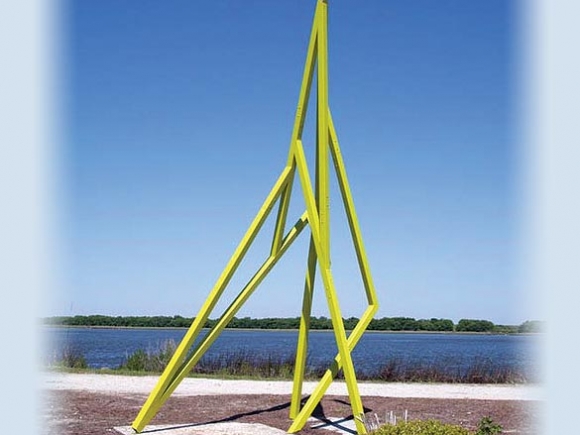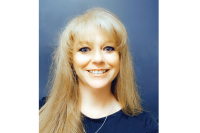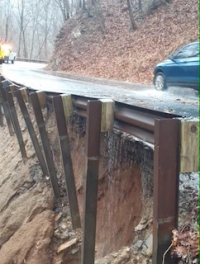Sylva mulls public art program

There’s something missing from the streets of Sylva, the town’s board has been noticing, and lately they’ve been talking about how to fill the dearth of public art downtown.
“When you go to downtown and you can enjoy public art in a community space, it increases the likelihood you’ll return to downtown,” explained Commissioner David Nestler. “It increases the appeal of downtown to tourists as well.”
Waynesville is a prime example of public art done well, Nestler said. A stop by the metal sculptures playing banjo and washboard bass on the corner of Main and Miller has become a mandatory photo op for any downtown visitor, and many other pieces are placed throughout town as well. Sylva’s leadership has been casting eyes over the mountain to Waynesville, envisioning a future in which their town’s public art program could perhaps be similarly strong and expressive.
The effort in Sylva is still in its infancy. As Commissioner Greg McPherson said, it’s still “just lots of talk.” But it’s talk that looks to be headed somewhere.
The first step, Nestler said, would be to create a public art fund — a spot to park any grants and tax-deductible donations to be used toward art installation.
Town Manager Paige Dowling is currently looking into how other towns do it and talking with Sylva’s auditor, hoping to perhaps have the fund established at some point in September, though the task could take longer.
Related Items
Nestler has been brainstorming lately, jotting down lists of ideas for how to get money into the fund without raising taxes.
There are often grants available for such projects, but the problem with grants is that they’re typically project-specific — getting a grant that would plop funds into the account for use however and whenever the town decided would be highly unlikely.
Nestler has got a couple of thoughts so far. For instance, perhaps the town could raise the rental fee for use of Bridge Park with the intent of using the extra funds to purchase art for Bridge Park. Or, maybe downtown merchants could be convinced to start asking customers for donations to the fund as they check out.
“What I was trying to figure out was a way to get recurring funds into an account with the town without using tax dollars,” Nestler explained.
Getting a public art program off the ground could also involve stirring up community members to help lead the projects. That’s how Waynesville does it. The town has a 10-member Public Art Commission whose members serve three-year terms. The group develops proposals for projects, and once an idea for a project has been fleshed out, the commission sends out a call for artists and then begins fundraising efforts.
Sylva has a perennially tight budget, something that still holds true even after the town increased its property tax rate by 12.5 cents per $100 this year. However it’s executed, a public art program would have to be easy on the town budget.
McPherson, himself an artist, is also working on some creative solutions to the problem, which has led him to suggest partnership with the talent at Western Carolina University. He got an offer from Jordan Krutsch, a grad student in the school’s Masters of Fine Arts program, to loan a 15-foot steel sculpture of his for display at Bridge Park.
“We’re just trying to get the ball rolling a little bit in an unconventional way,” McPherson said. He said he likes the sculpture, the sense of lightness it has to it, and it could be a good chance for the town to get an inexpensive start on its journey into public art.
Krutsch would allow the town to keep the piece for a year or so, free of charge, but there would still be some cost to the endeavor. Installing it would cost likely $30 to $50, and the town would also need to add the piece to its liability insurance — Dowling is in the midst of researching what that payment might be.
However, Nestler commented, it’s important that any art displayed contributes toward expressing what Sylva is about — he doesn’t want art installations to appear random.
“One of the things we take pride in in Western North Carolina is the rich culture and art heritage,” Nestler said. “Why not put that on display?”









